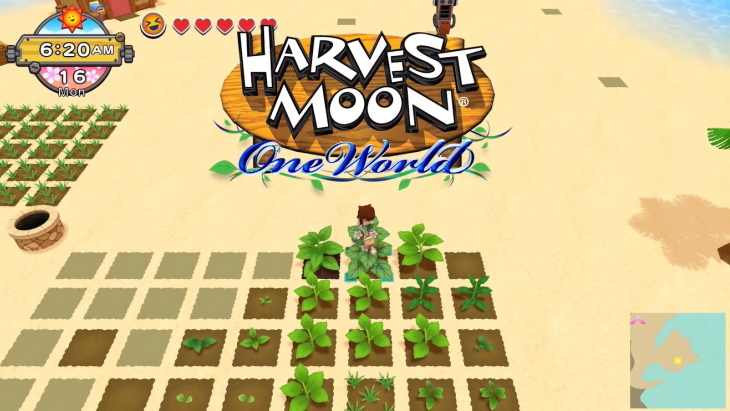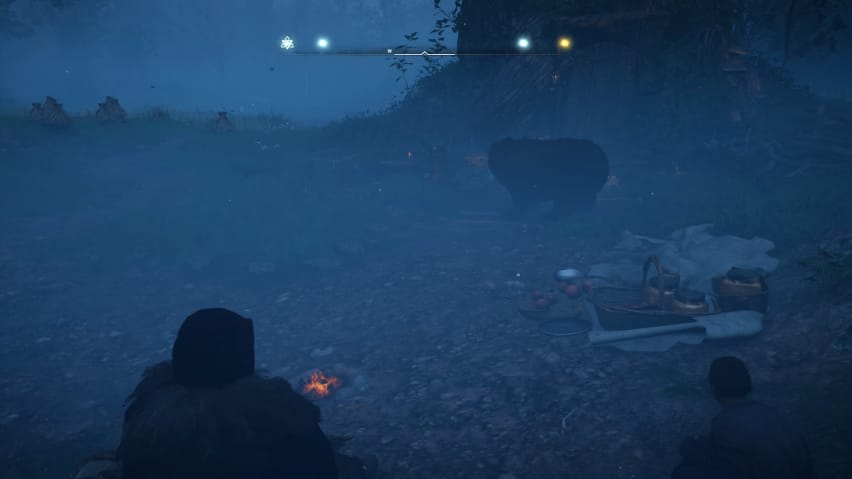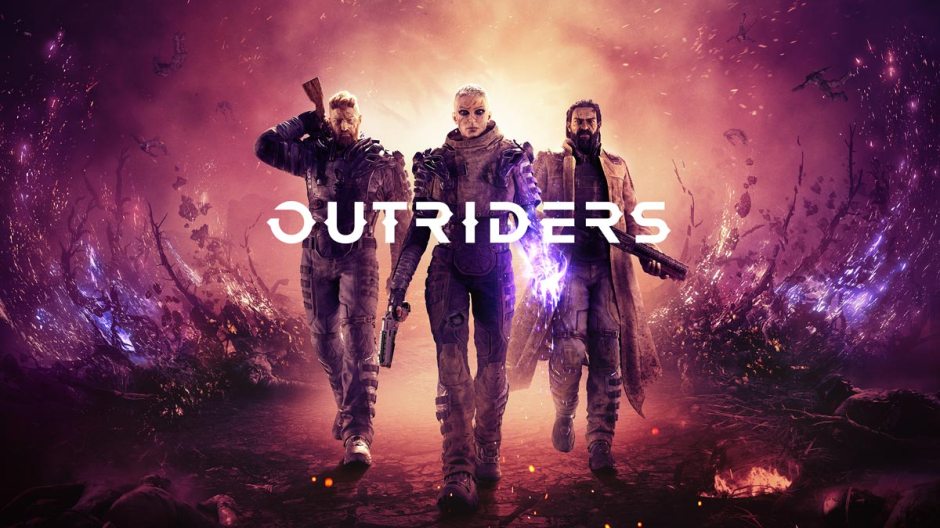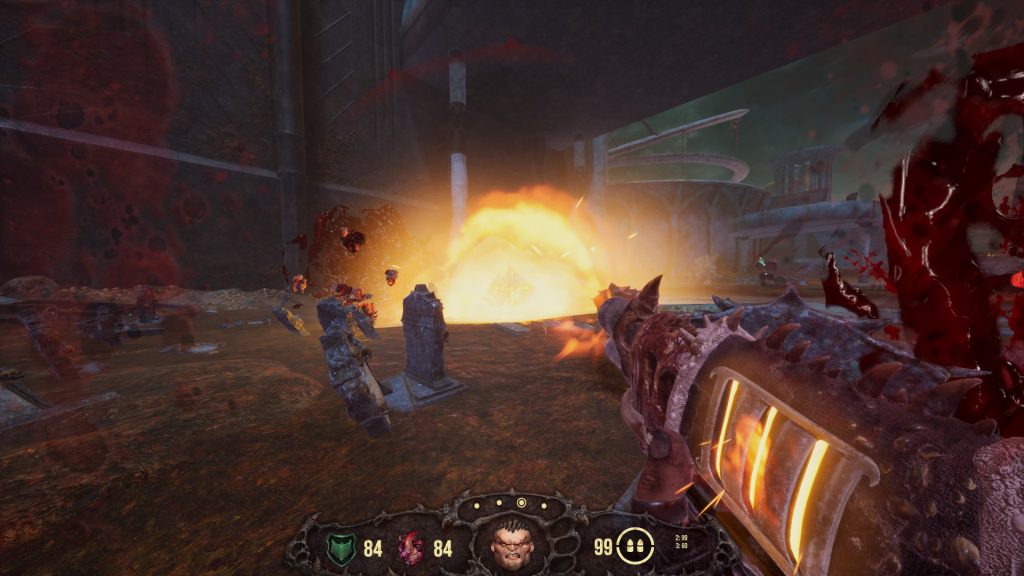
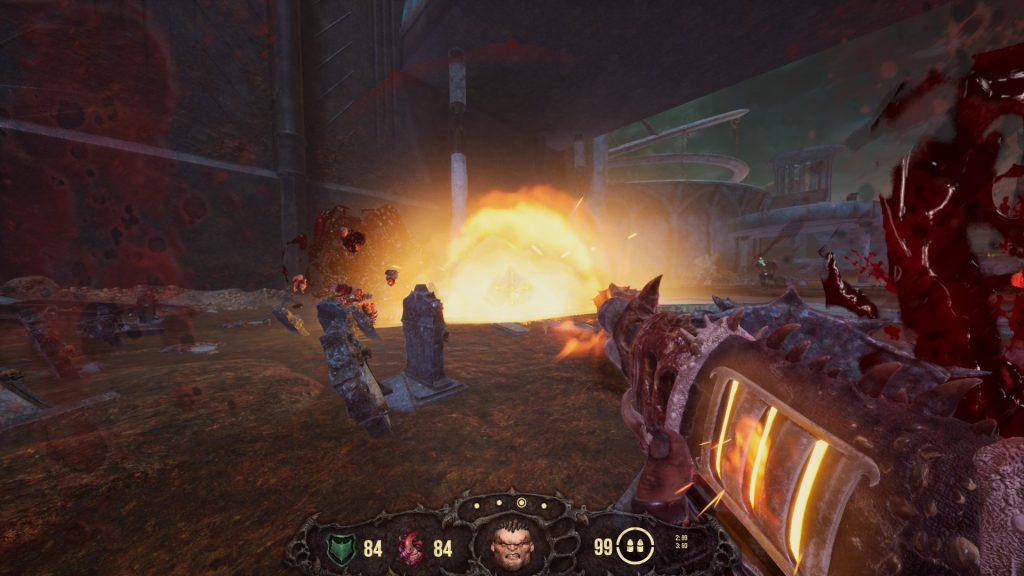
If you’ve been paying any attention lately, then you’ve probably noticed that retro-inspired shooters are one of the current hot trends in the game industry.
After being dominated for over a decade by modern military shooters trying to ride off the success of Call of Duty and Battlefield, faster-paced FPS games that channel the essence of ’90s classics like Quake, Doom, and Duke Nukem have been making a big comeback over the last few years, especially on PC.
Ion Fury, Hedon, Amid Evil, Dusk, Project Warlock, and Wrath: Aeon of Ruin are just a few of the games spearheading the revival of ’90s-style shooters. One of the latest games to join this ever-growing list is Hellbound, an FPS that was successfully Kickstarted in 2018 by the Argentina-based indie startup, Saibot Studios.
A quick glance at some trailers and screenshots reveal a game that certainly looks and sounds pretty impressive. Unfortunately, Hellbound feels more like a tech demo for a larger, more fleshed-out project that is still in active development.
Hellbound
Developer: Saibot Studios
Publisher: Nimble Giant Entertainment
Platform: Windows PC
Release Date: August 4th, 2020
Players: 1
Price: $14.99
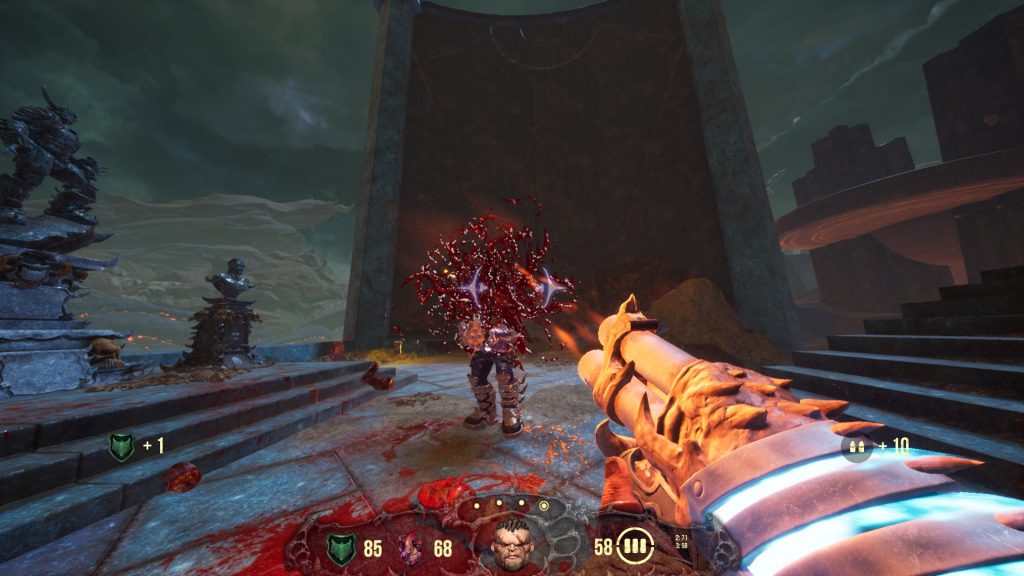
The Steam page for one of Hellbound‘s old demos cracked some jokes about the game not really having a story. As it turns out, these jokes were fairly accurate. What little story the game has is conveyed through text on the loading screens.
These brief paragraphs are presumably meant to be hardcore, but come off as the cringy scribblings of a teenage edgelord that just discovered that the words “mother” and “fucker” can be combined together.
You play as Hellgore, a mountain of rippling muscle and bad one-liners resurrected by humanity to fight against a demonic invasion. Your goal is to fight your way through Hell and destroy the pillars used by the demons to teleport to Earth.
Of course, none of this ultimately matters. Hellbound is all about turning lots of demons into a fine red mist with big guns, an objective that it does a moderately good job of achieving.
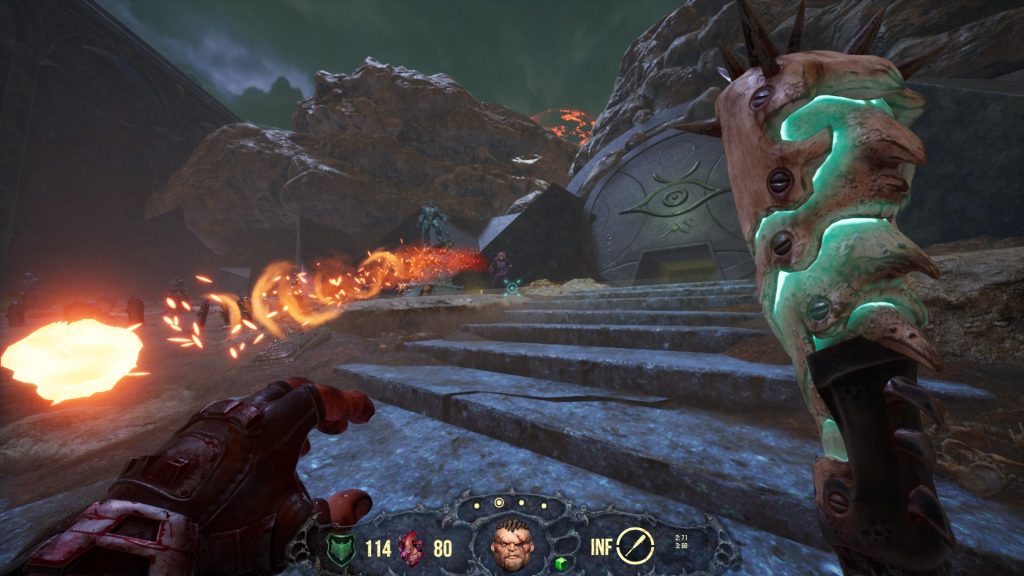
Hellbound‘s campaign features six levels, with a seventh level that is effectively just a boss fight. As with many old school shooters of the past, Hellbound‘s levels generally involve shooting your way through enemies in various arena-like areas in search of color-coded keys used to unlock doors.
The game’s level design is okay overall. The visuals are pretty good for a title in its price range, though many of the levels can accurately be described as “ruins surrounded by red lava pools.” Each level generally features some fairly linear paths, but there are lots of secret areas loaded with health, armor, and ammo pick-ups to keep an eye out for.
There is a bit of a pacing problem, however. Hellbound‘s levels often require you to do a fair amount of backtracking, occasionally involving some minor platforming elements, or time sensitive dashes to a door before it closes again.
The timed door dashes are made worse by the fact that many of them involve opening a door you can’t actually see from the switch that controls it. This results in several cases of “pull lever, something happened” puzzles like in old adventure games.
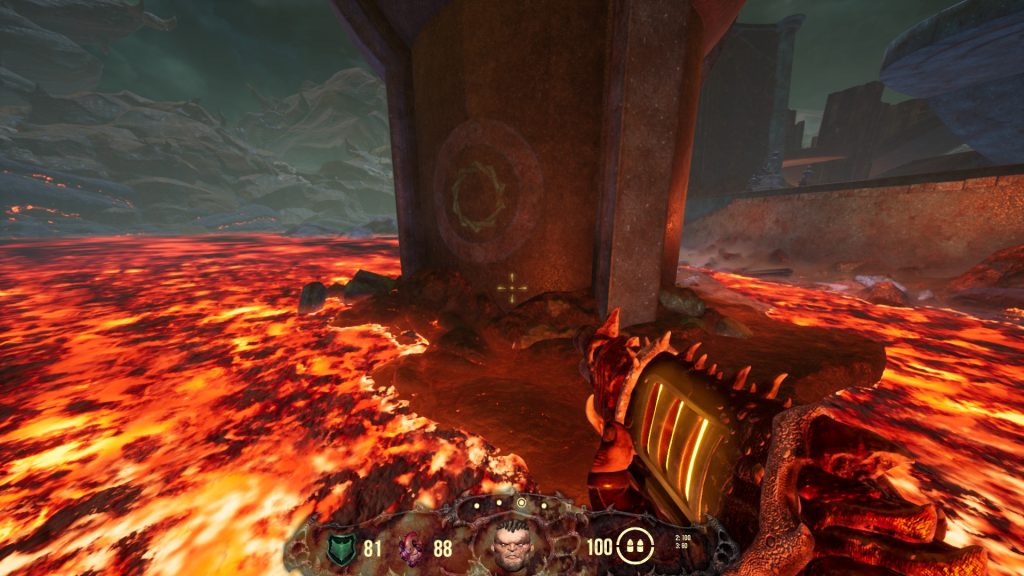
There is one level in particular that involves a lot of this running back and forth to find three keys to open a huge door. This level is fairly large, and features a maze-like series of ruined buildings that make it easy to lose sight of where you actually need to go next. Said level also features about two or three of these timed door runs. It kills the game’s momentum, and results in a level that just isn’t particularly fun.
There are a few levels with vast open areas that invoke Serious Sam, and this is where Hellbound is at its best. No timed door puzzles or keys to find; just you, your guns, and a giant wave of demons that need to have their body parts splattered across the terrain.
Hellbound has some fairly meaty and satisfying combat. The shotgun and rocket launcher are particularly fun to use, and can reduce enemies into a pile of giblets and gore. This is actually a gameplay feature, as gibbing an enemy makes them drop a small amount of health. The sound assets for the guns and gore are also loud and impressive, and there is a pretty decent metal soundtrack to accompany the action.
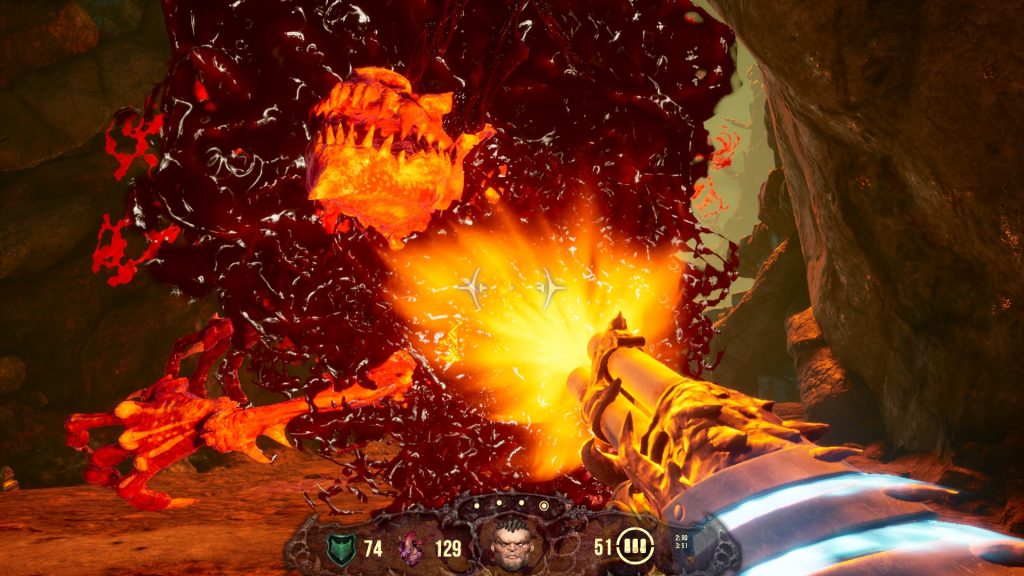
While many encounters just feature a handful of enemies at once, the game will occasionally throw some moderately large hordes at you that need to be kited with skillful circle strafing, just like in the good old days. Ammo management becomes important in these encounters, but Hellbound is otherwise fairly generous with its health and ammo drops on the default difficulty.
Even though Hellbound‘s guns are pretty fun to shoot, the game’s arsenal seriously lacks variety. Besides fists and a club that you’ll probably never use, Hellbound‘s only guns include a semi-automatic rifle, a shotgun, a minigun, and a rocket launcher. This wouldn’t be a huge problem if they all at least featured an interesting alternate fire mode, but they don’t.
The shotgun just fires all three of its barrels at once, while the rocket launcher shoots a bouncing grenade that detonates after a few seconds. The rifle and minigun just have a lame iron sight zoom feature that is utterly pointless in a fast-paced retro shooter.
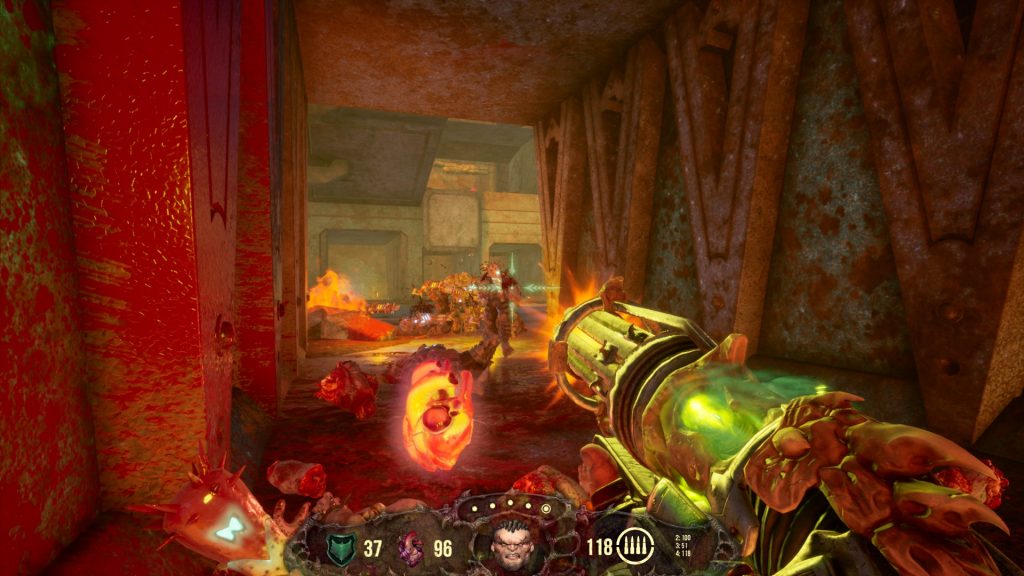
The zoom is also pretty garbage, and doesn’t actually work that well. It seems to be glitched in some way, as after you leave the iron sights the game quickly zooms in and out again in such a way that its actually a bit nauseating if you do it several times in rapid succession.
Hellbound also features three power-ups, but as far as I can tell each one only appears once in the campaign. The power-ups are Hell Damage, Hell Speed, and Hell Skin, which each provide 30 seconds of increased damage, increased speed, and increased damage resistance, respectively.
Unfortunately, these power-ups kind of suck, and are completely unfun to use. It’s not that they aren’t useful in theory, but in practice they are awful. This comes down to the fact that they apply a horrendous color filter to the screen, and cause some really gnarly shaking effects.

This just makes the action really hard to see and extremely unpleasant on the eyes. I’ve been experiencing some eye and balance issues over the past few months, and the filters and effects used on the power-ups actually made me physically ill.
Enemy variety isn’t much better than the arsenal selection, either. There are four types of generic grunts wielding each of the game’s weapons, an imp that throws fireballs, and an imp with a powerful lunge attack.
The lunging imp is the only truly frightening enemy, simply because it can take off nearly a quarter of your health with one attack. They are often placed around corners and in tight corridors too, making them a bit tricky to dodge if you aren’t careful.
The enemies have no real AI to speak of, and will generally just mindlessly charge at you. The fireball imps are the only ones with somewhat unique patterns, as they tend to try to keep their distance to bombard you at long range. The enemies have some pathfinding issues as well, and I saw several instances of demons getting caught on the environment during my playthrough.
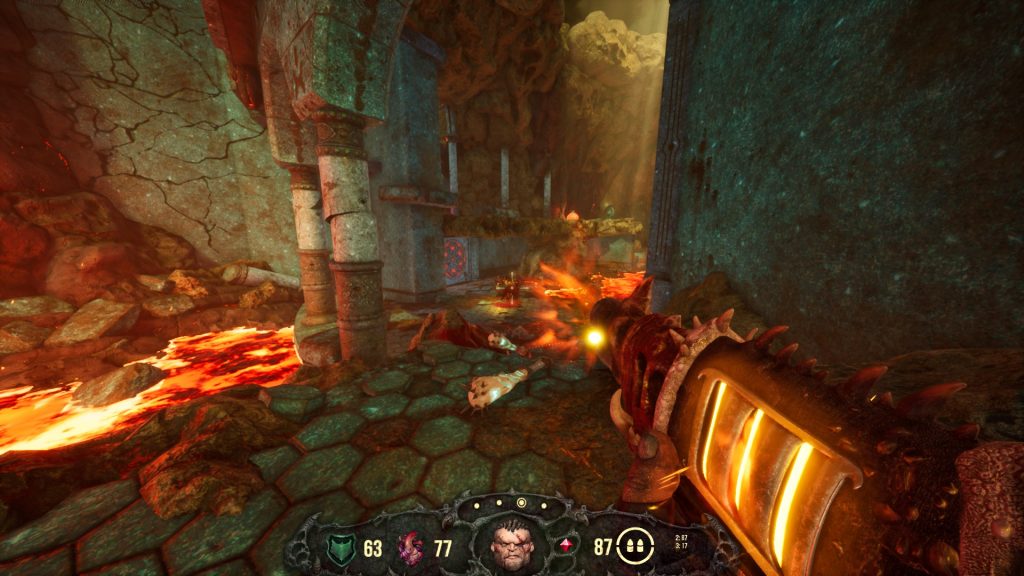
The game also just isn’t particularly difficult, even on the harder settings. As I said earlier, health and ammo drops are fairly generous by default. All of the enemies die pretty quickly, with only the aforementioned jumping demon being particularly threatening.
The only big difference between the difficulties is that you’ll need to actively seek out the secret areas more often on the harder modes to keep your ammo topped off.
Hellbound‘s performance is pretty solid, at least most of the time. Throughout the main six levels the game kept a pretty consistent framerate on the highest settings, even during large encounters. One setting that might turn off some gamers is the FOV options though, which cap out at 90.
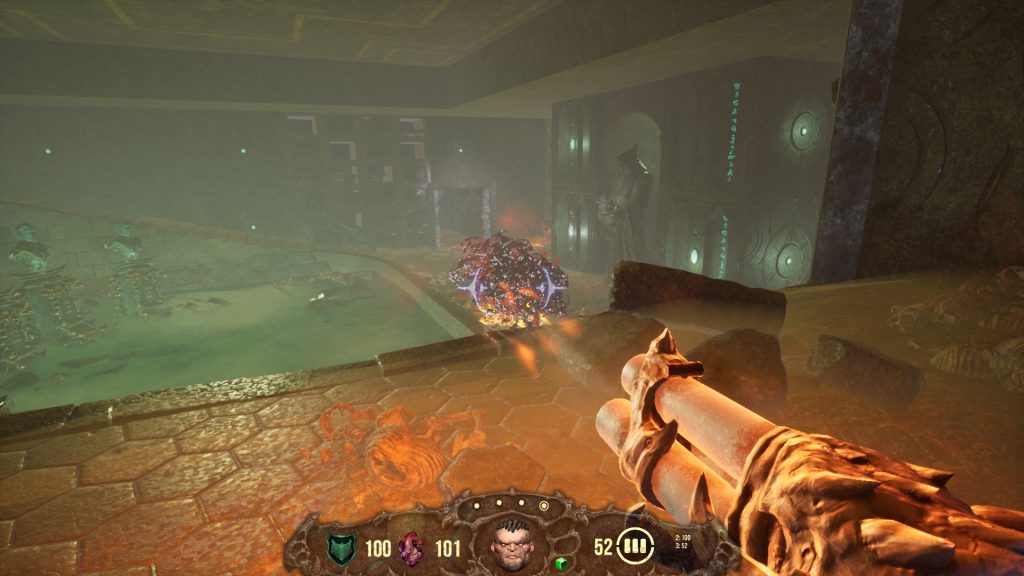
While the performance is pretty consistent most of the time, the final boss fight is extremely unoptimized. The boss fight features three large waves of demon reinforcements, which cause the game to chug really hard. My performance often dropped below 30 during these battles against the adds, and even at the best of times the boss fight struggled to maintain even 40 FPS.
This makes the boss fight the most challenging part of the game. Not because the boss and his reinforcements are hard, but because the framerate was just so awful.
The boss also just isn’t very interesting or challenging. Its literally just a really big demon that throws fireballs at you. He has no attack variety or patterns beyond summoning some reinforcements at set parts of the fight. Part of me thinks that the boss is so unoptimized on purpose because the horrible framerate is the only thing that made it even remotely challenging.
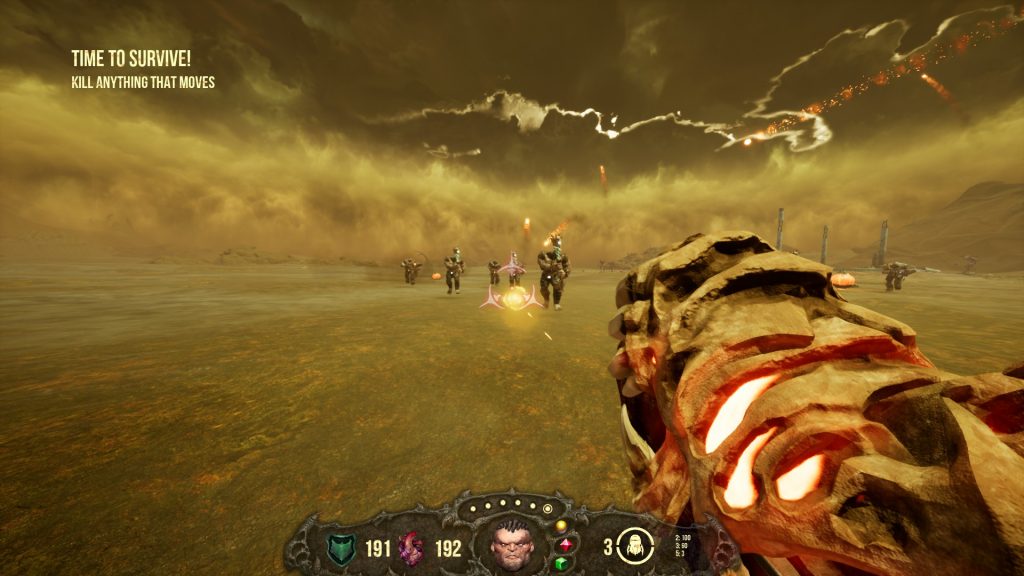
I mentioned that Hellbound has six levels and a boss fight earlier, which results in a campaign that only lasts around two hours at the absolute most. The only replay value to the campaign would be hunting for all the secrets or beating the par time for each level, though the game doesn’t actually feature any achievements.
There is a survival mode where you can fight waves of enemies, but Hellbound‘s overall lack of variety ensures that even this won’t extend the experience by too much.
I know I’ve ragged on Hellbound quite a bit in this review, but I really don’t think is a terrible game. It’s like I said in my opening paragraphs: Hellbound feels like a tech demo, something that a developer would throw out on Early Access as they continue working on the experience.
Hellbound has the core foundation of a pretty enjoyable ’90s-inspired FPS. The guns are fun and satisfying to shoot, and most of the levels are decently designed with lots of secrets. It has its fair share of issues, but many of them could probably be fixed up with a few patches.
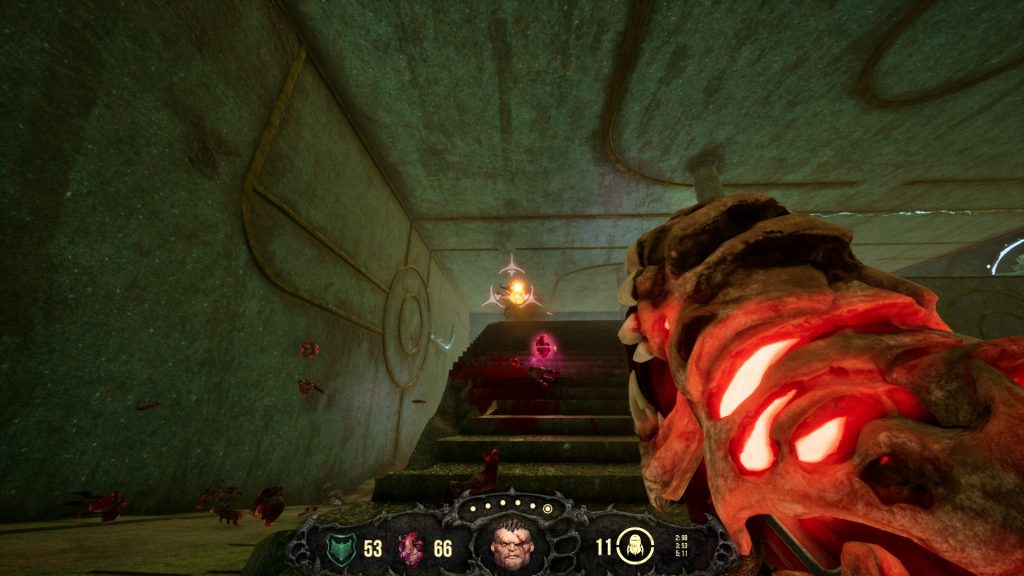
The game’s biggest, inescapable issue is that it’s so short and just lacks content and variety. The game is over before you know it, and its meager selection of weapons and enemies ensure that you don’t really feel the need to keep playing after you finish the extremely short campaign.
There are times while playing Hellbound that I was able to enter the coveted shooter trance, allowing me to just sit back and enjoy the mindless carnage as my shotgun blew apart wave after wave of demons. At the same time though, there are so many other excellent ’90s-inspired shooters that its tough to truly recommend Hellbound in its current form, even for a mere $15.
Saibot Studios clearly has a fair amount of talent and passion, they just need more experience and a greater budget to expand upon what Hellbound offers. Hopefully, the developers are able to keep at it and deliver a truly unforgettable game sometime later on.
Hellbound was reviewed on Windows PC using a review copy provided by Nimble Giant Entertainment. You can find additional information about Niche Gamer’s review/ethics policy here.


